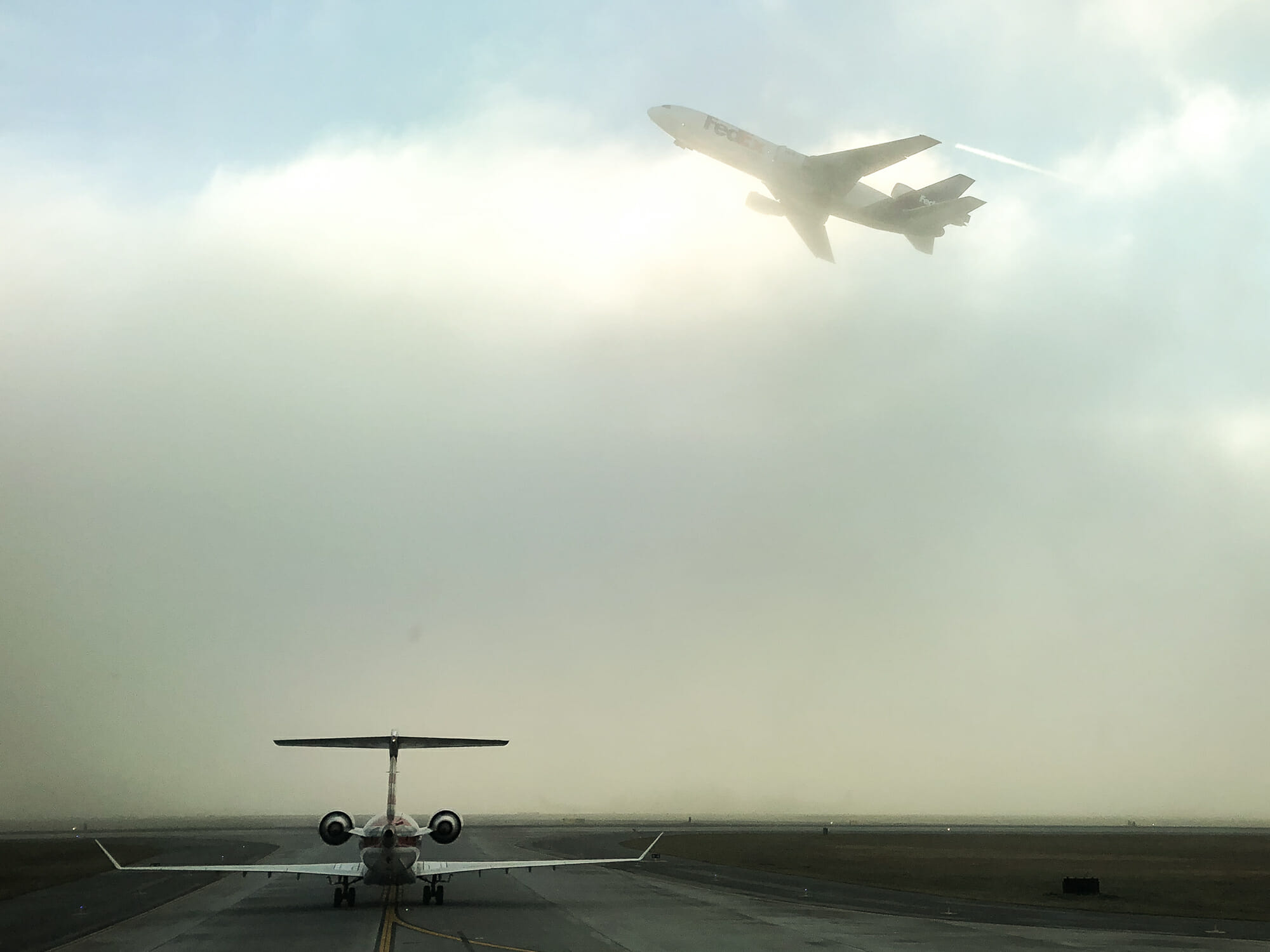METAR from Buffalo Niagara International Airport (KBUF) on October 26th, 2021 at 0754 EDT
KBUF 260354Z 02009KT 3/4SM R23/P6000FT -DZ BR OVC002 10/09 A2973 RMK AO2 SLP070 P0000 T01000094
Flying during the fall season can be quite enjoyable, especially given the breathtaking views from the cockpit. We marvel at the leaves turning into many spectacular colors, a strong indication of the changing season, the associated meteorological conditions and environmental factors. Cloud free nights, the advection of cooler temperatures and moisture may result in the saturation of water vapor. The resulting phase change from water vapor to liquid water (or ice if the temperature is below freezing) can significantly reduce visibility. Professional flying conducted IAW Part 121, Part 135 and some Part 91 operations have strict regulations concerning takeoff and landing weather minimums, wherein aircraft operations may be significantly disrupted by fog and reduced visibility.

The Pilot’s Handbook of Aeronautical Knowledge (FAA-H-8083-25B) defines fog as “a cloud that is on the surface. It typically occurs when the temperature of air near the ground is cooled to the air’s dew point. At this point, water vapor in the air condenses and becomes visible in the form of fog. Fog is classified according to the manner in which it forms and is dependent upon the current temperature and the amount of water vapor in the air.” An illustration showing the different types of fog and associated mechanisms by Williams (1997) is provided from this link. While studies concerning fog and visibility climatologies are limited, Hardwick (1973) published a brief article summarizing the number of foggy days by month over the CONUS. The results showed that the Northeast, Gulf Coast, West Coast, and Appalachian Mountains are characterized by large numbers of fog days.
The primary goal of a professional pilot is to ensure the payload is safely and efficiently transported to the destination. Therefore, pilots should continue to pay attention to the “PAVE checklist.” Focusing on the “V” that stands for “enVironment”, pilots should carefully evaluate the terrain and obstacles, land cover (e.g., lakes and trees), and meteorology for every flight. For instance, in a light wind (less then five knots) situation a tail-wind takeoff away from fog-obscured terrain may reduce the risk for CFIT. Pilots should also safely navigate around the airport environment by following published ODPs and IAPs, especially during night and reduced visibility conditions.
References
Hardwick, W. C., 1973: Monthly fog frequency in the continental United States. Mon. Wea. Rev., 101, 763–766.
Williams, J., 1997: The Weather Book. USA TODAY. 240pp.



































































































































